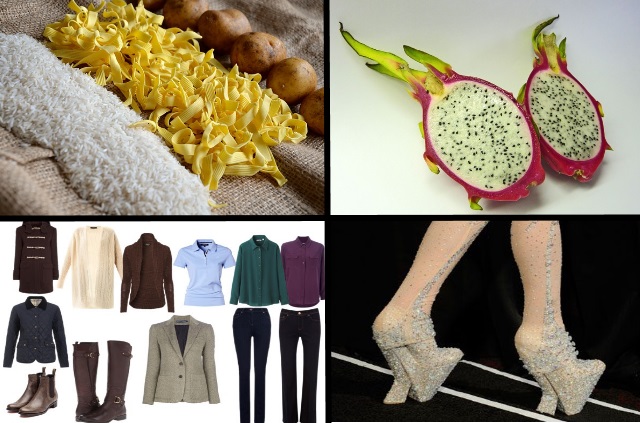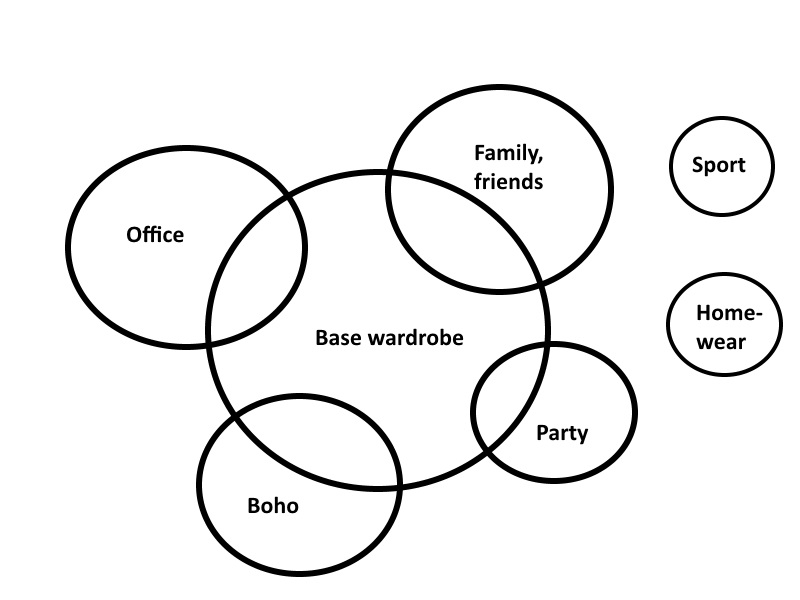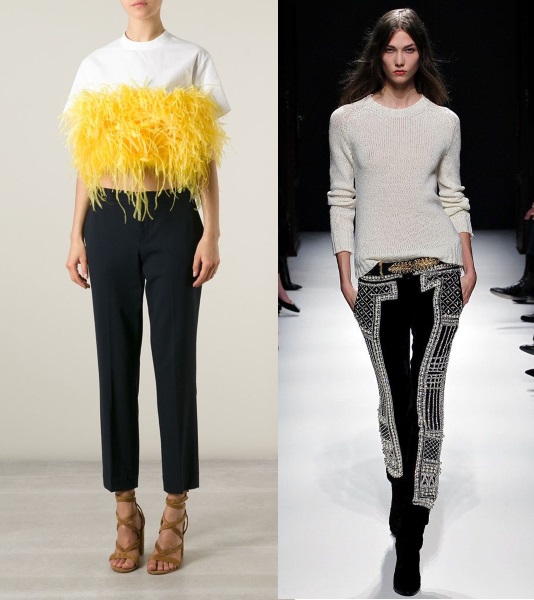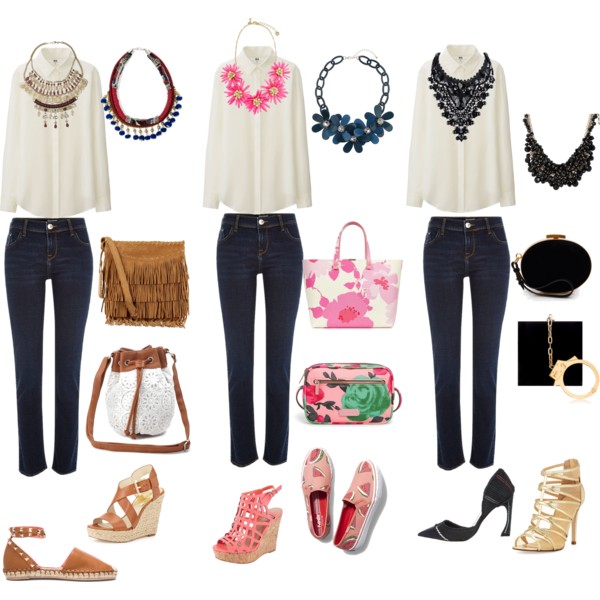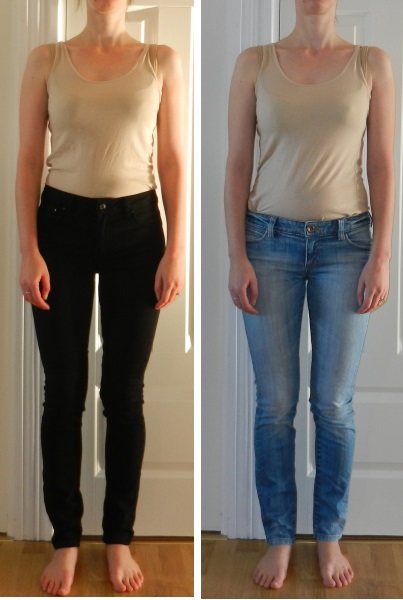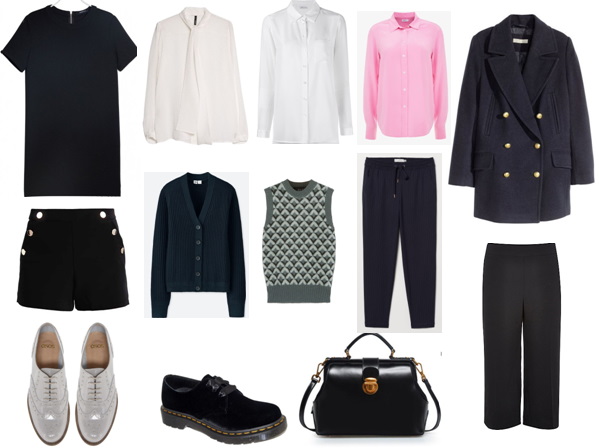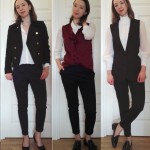Base wardrobe
Most of us want to have a wardrobe where everything goes with everything else, where you can just pull a few pieces out, throw them on and always look good. We want a wardrobe that allows us to pack easily, and one with something to wear for any occasion. Well, this is all possible, and it starts with a good base wardrobe.
What is a base wardrobe?
It is a set of items that:
- fit perfectly
- are plain and simple, without any noticeable details or certain styles
- are easy to combine with each other and every other item in your wardrobe
- can be used for any occasions you might be involved in (e.g., from supermarket shopping to a wedding reception)
It’s great if your tops are made of thin draping fabric that allows you to wear layers without adding bulk. This is optional, since some people may dislike layering, depending on the climate where they live.
If we compare dressing with cooking, a base wardrobe would consist of eggs, flour, bread, rice, pasta, etc. – simple, plain and boring. All the “special” clothes would be “spices”. If you only have “spices”, then you have nothing to eat; if you only have basics, you may get bored quickly. Clearly, we need both, but we should always start with the basics.
Another example of this is Legos; by using plain bricks, you can build a house, a boat, a spaceship, and a thousand other things. However, if there is some kind of image on the brick, it will limit the choice, but we still need them!
Why do we need a base wardrobe?
A base wardrobe is the core of every wardrobe. Basically, if you have rice, potatoes, eggs and flour, you will always have something to eat, and if you have a good base wardrobe, you will always have something to wear.
A base wardrobe makes life easier, such as:
- when you don’t have time or the desire to think about what to wear, but you still want to look good
- if you are in a transitional period of your life and don’t know how you want to look yet (parenthood, new status, new job, new city/country etc.)
- when you need to pack for trips
- allowing you to dress your base up or down, depending on the occasion or destination
Since all the items fit perfectly and pair well with each other, you will look good no matter what!
What’s the difference between a base wardrobe and a capsule wardrobe?
Some people use these terms interchangeably, but I prefer the following concept:
As I said, a base wardrobe is the core of your wardrobe, but you can also have different capsules that belong to different styles or can be used for different occasions.
In this picture, basic pieces are in the middle (plain without any details) and we can create different styles by adding elements that belong to those styles.
Because basic items are so plain, they can be combined with any crazy trend you choose and adapted to any style with the help of accessories.
Where do I start creating my basic wardrobe?
Due to different lifestyles, a base wardrobe is unique for everyone. If you like colors, your base can be colorful.
Here is a list you can use to start creating your own base (you can download a full version here):
1. Cardigan
2. Sweater
3. Leather jacket
4. Light down jacket
5. Raincoat
6. Coat (read here how to choose a timeless coat)
7. Shirt
8. T-shirt
9. Silky top
10. Trousers
11. Skirt
12. Blazer
13. Big bag
14. Small bag
15. Pumps
16. Flats
17. Boots
18. Sneackers
19. Dress
To understand whether an item is basic for you and your wardrobe, you should be able to answer “yes” to these three questions:
- Does it fit well?
- Does it pair with most of the other items in my wardrobe? (Most of us have certain go-to items in the wardrobe, like a pair of jeans that works with everything. We want more items like this.)
- Can I wear it to most of my occasions?
You should be able to wear your basic items as they are without any extra thinking.
For example:
- If jeans are too low and you can only wear them with longline tops – they are not basic.
- If you can’t wear a sleeveless top without wanting to cover your arms – it’s not basic.
- If your shirt has a transparent back or cut-out details and it is not always appropriate for your lifestyle, and you have to think about where and how you can wear it – it’s not basic.
We want base clothing that we can pull out of the wardrobe blindly, throw on and go out without extra thinking. Your base wardrobe should make life easier, not harder.
Example:
The black jeans on the left are basic because:
– they fit well
– they are plain and simple without any extra details
– they are easy to combine with most tops and shoes
– they can be worn for most occasions, except very formal ones where jeans are not allowed
The blue jeans on the right are not basic because:
– the waistline is too low, which can be uncomfortable and requires longer tops so the stomach is not exposed.
– they are not easy to combine and require extra thinking, which we try to avoid with our basic wardrobe
– they are less formal, so they can only be worn to more casual occasions. This is not bad in itself, but it means that these jeans are not basic, i.e., not as versatile as the black ones in this person’s wardrobe.
More examples:
Jeans:
– Fit perfectly, are plain and simple, without any noticeable details. They can be easily combined with any other item, and can be used for most occasions, except very formal ones. They are basic.
Blue t-shirt:
– Fits perfectly, plain and simple, without any details. It can be easily combined with any other item, can be used for most occasions, even quite formal ones due to the silky fabric. It is made of thin draping fabric that allows for wearing layers without adding bulk. The sleeves may add bulk under a thin cardigan or blazer. Almost basic.
Printed shirt:
– Doesn’t fit perfectly – quite long and may be difficult to tuck into trousers
– Plain in cut, but the print is noticeable and has a soft, floral, informal character
– Cannot be easily combined with any other item; it will be difficult to combine with another printed item, and hard to tuck in some thinner pants or skirts
– Can be used in mostly informal occasions
– Made of thin cotton, but doesn’t drape well and holds its shape, so it will add bulk under a cardigan, jumper or thin blazer. Not basic – “Spice”.
White shirt:
– Fits perfectly, plain and simple, without details. It can be easily combined with any other item, can be used on most occasions, and is made of thin draping fabric that allows for wearing layers without adding bulk. The shirt is basic.
This is how these strategies can look in real life! Check out my Pinterest board with many more ideas (almost 300 at the moment!)
Questions? ;) If you want help creating your personal base wardrobe, I will gladly lend a hand. You can find more information about my services here.
